Korean rice cake soup, or dduk guk, is a comforting, one-pot meal made with sliced rice cake and, usually, beef and garnished with egg, green onion, and seaweed. Not only is it easy to make, it's also the classic soup for celebrating Korean New Year!
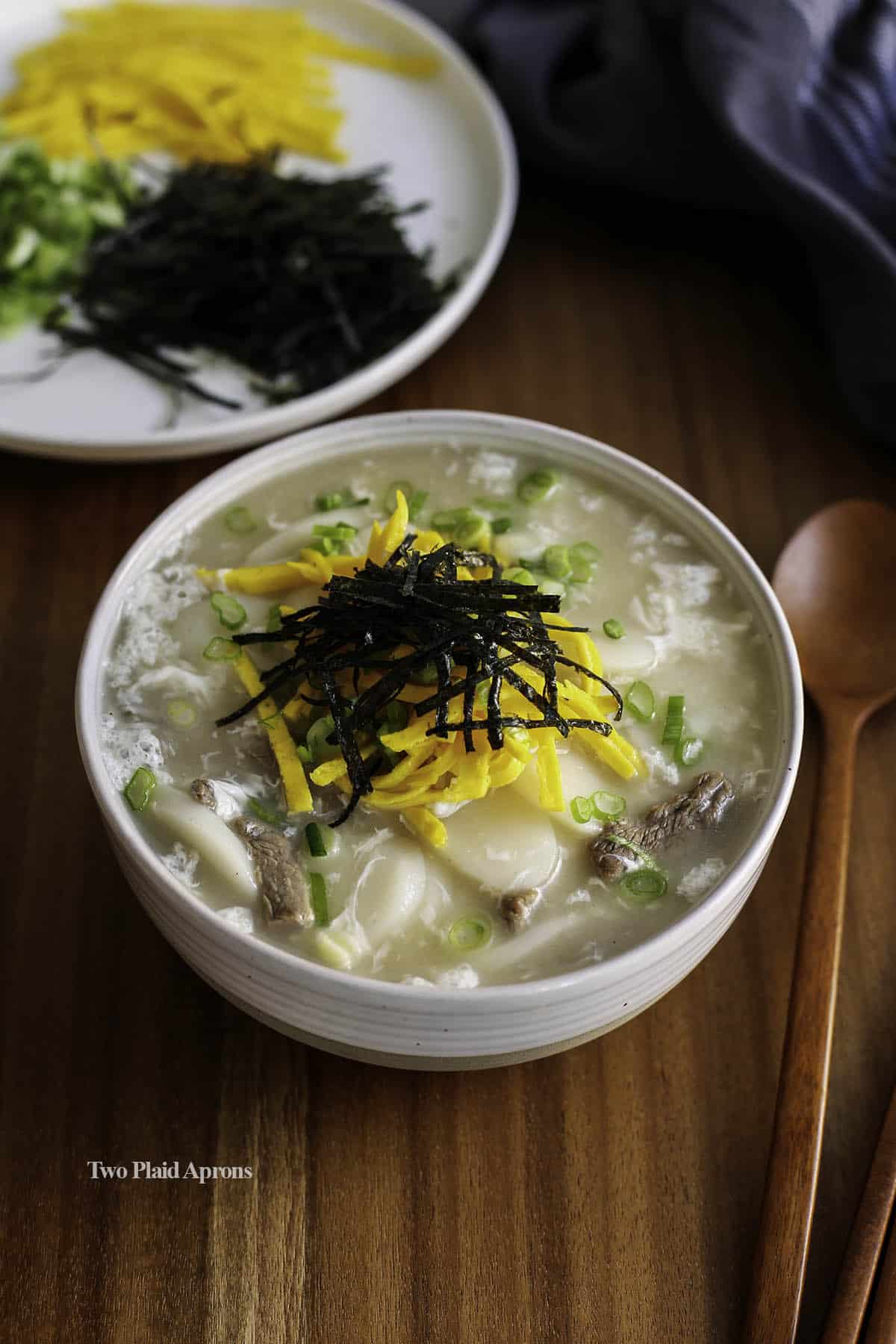
It's almost Lunar New Year, and that means, time to start preparing some auspicious foods!
Last year, we celebrated it Chinese style, with a whole steamed fish with ginger and scallion. This year, we'll be celebrating with a comforting bowl of dduk guk, aka Korean rice cake soup! Even though it's the classic soup for new year celebration, dduk guk is incredibly easy, which also makes it a great soup to make for an everyday meal!
If you're looking for more dishes to add to your Lunar New Year menu, check out our recipes for:
What is dduk guk?
Dduk guk/ tteok guk (떡국), also known as Korean rice cake soup, is a classic soup eaten on Korean New Year Day (Seollal -설날) to "gain" a year and for good luck. The soup is seasoned with beef, soup soy sauce, fish sauce, and sesame oil. It also has a slight viscosity due to the sliced rice cakes (dduk/tteok). It's garnished with thinly sliced egg (jidan - 지단), green onion, and crushed or thin strips of toasted seaweed (gim - 김).
The different ingredients in dduk guk symbol things we wish for in the upcoming year. For example, the sliced rice cake are flat, oval discs that resembles coins, which symbolizes prosperity and wealth. Other symbolisms like the white color of the rice cake represents "brightness" or "purity" so that the new year starts off bright and clean.
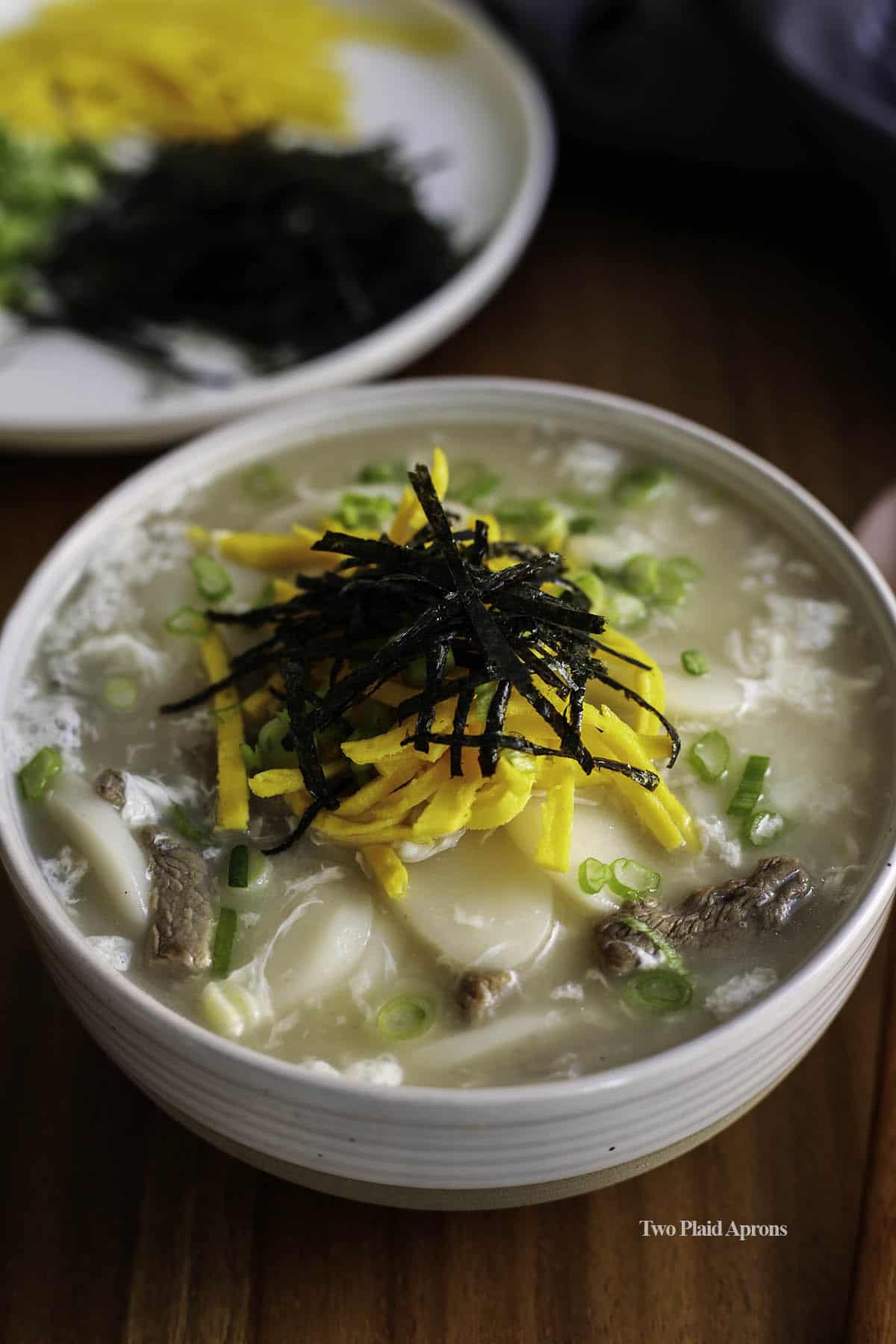
Is beef stock or anchovy stock needed for dduk guk?
Every family have their own way of making dduk guk, some require beef stock and other anchovy stock. For our recipe, neither are needed, which simplifies the ingredient list, but still produce a delicious rice cake soup.
Instead of spending an hour making beef stock with brisket, we used thinly sliced beef top rounds to make a quick broth. Along with that, soup soy sauce (also known as gukganjang) and fish sauce add additional flavor and negate the need to make anchovy stock. Best of both worlds!
Dduk guk variations:
- Dduk mandu guk (rice cake dumpling soup) - This is the most common variation from the classic dduk guk. Korean dumplings (mandu) are added to the soup with the rice cake.
- Gul dduk guk (oyster rice cake soup)- This popular variation is commonly seen at the provinces near the southeast coast of Korea, where seafood and oysters are abundant. The soup has a nice brininess from the addition of oysters.
Ingredient substitution
- Beef top round - Feel free to use other cuts of beef you have. Sirloin, chuck, brisket, flank, and ribeye are great substitutions. Just make sure they don't have too much sinew and the beef are cut into thin strips for fast cooking.
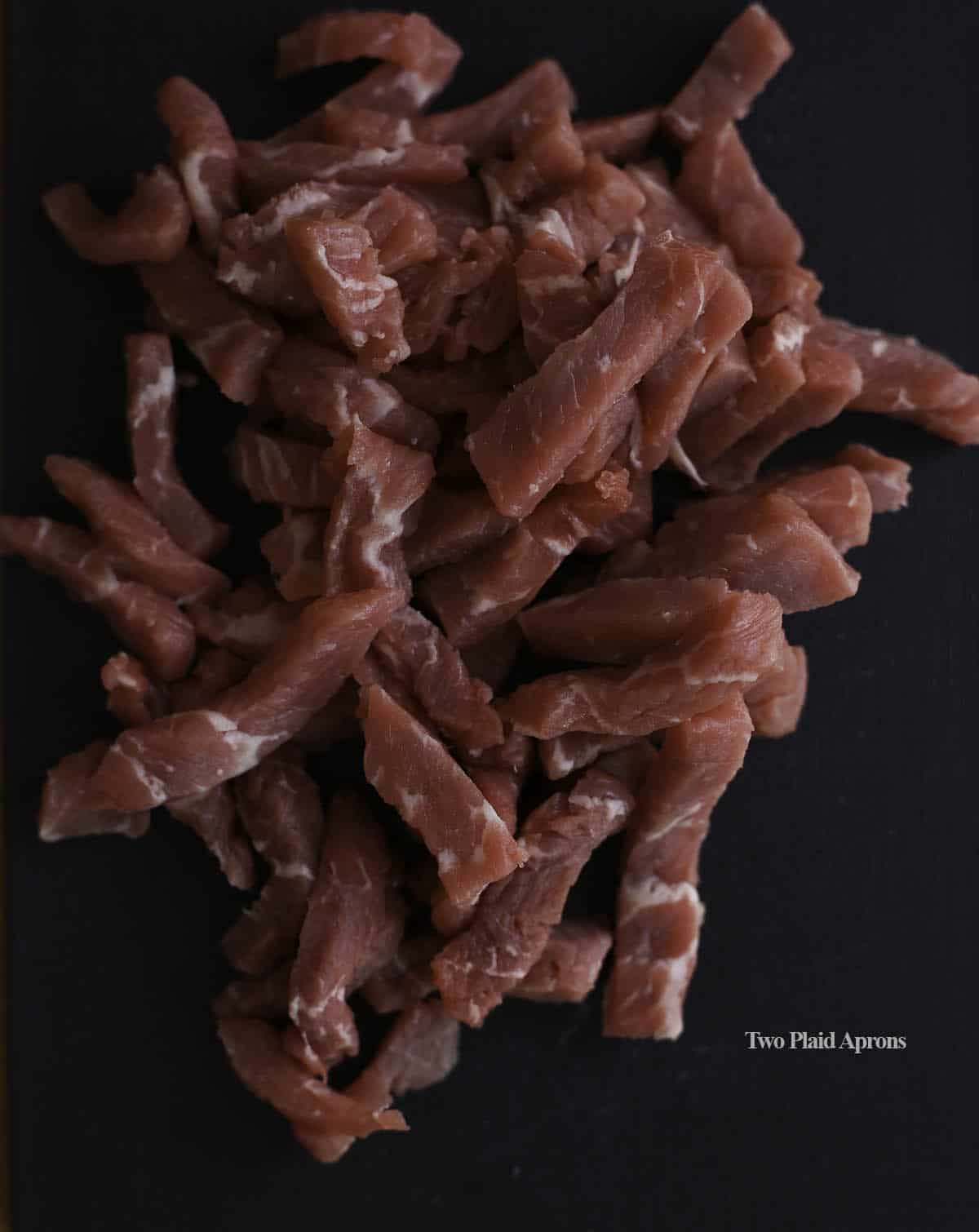
- Soup soy sauce (or gukganjang - 국간장) - This is also known as Korean soy sauce, made as a byproduct of fermented soybean paste (or doenjang - 된장), which means more flavor than regular soy sauce. If you don't have soup soy sauce, simply use regular soy sauce or extra fish sauce instead.
- Fish sauce - This provide extra flavor in the dduk guk without the need to make anchovy stock. If you don't have fish sauce on hand, you can simply omit it, sub with soup soy sauce, or beef or chicken bouillon.
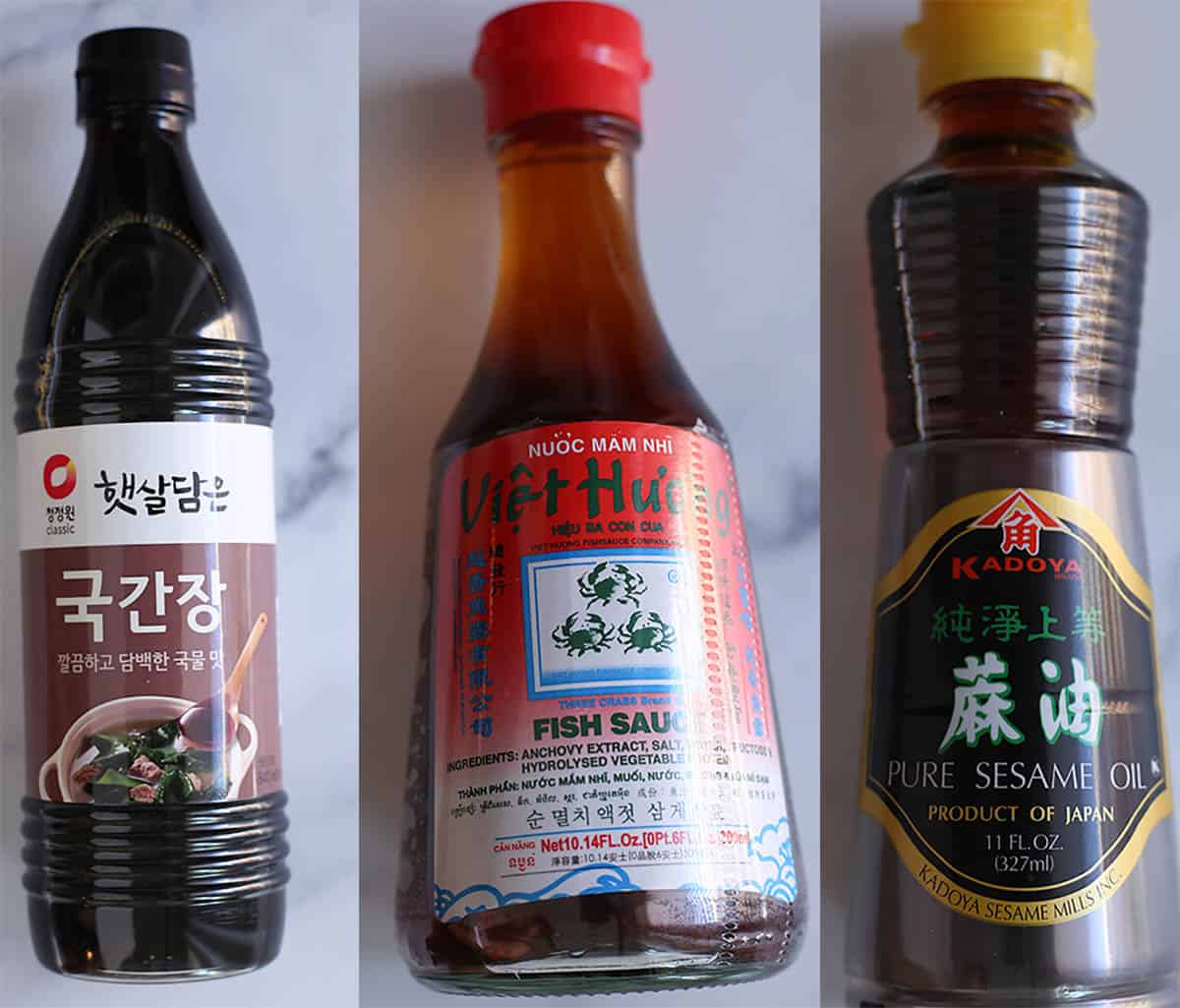
Cooking Tips
1.Soak your rice cakes to soften them and reduce cooking time. If you store your rice cakes in the freezer, soaking them in room temperature water will help defrost them faster and help separate them. For certain brands, soaking sometimes also prevent them from falling apart while cooking.
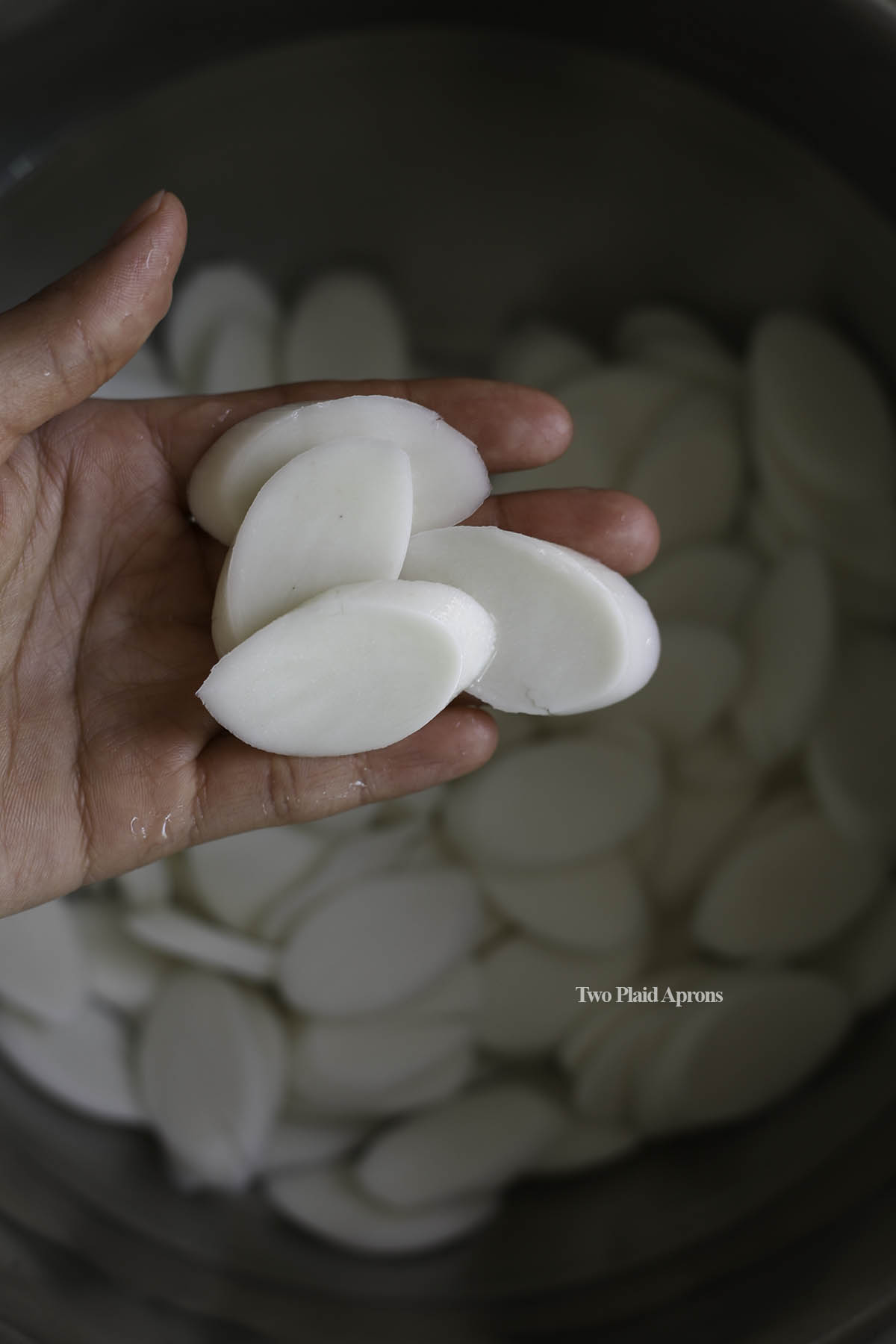
2. Cook the egg crepe in a nonstick pan and on low or medium-low heat. This will prevent the egg crepe from getting stuck to the pan, develop any unwanted colors, and getting cooked too fast. The low heat will give you enough time to tilt the pan and spread the egg yolk to keep the egg crepe thin. Also, don't worry about keeping the crepe perfect, because it will be cut into thin strips.
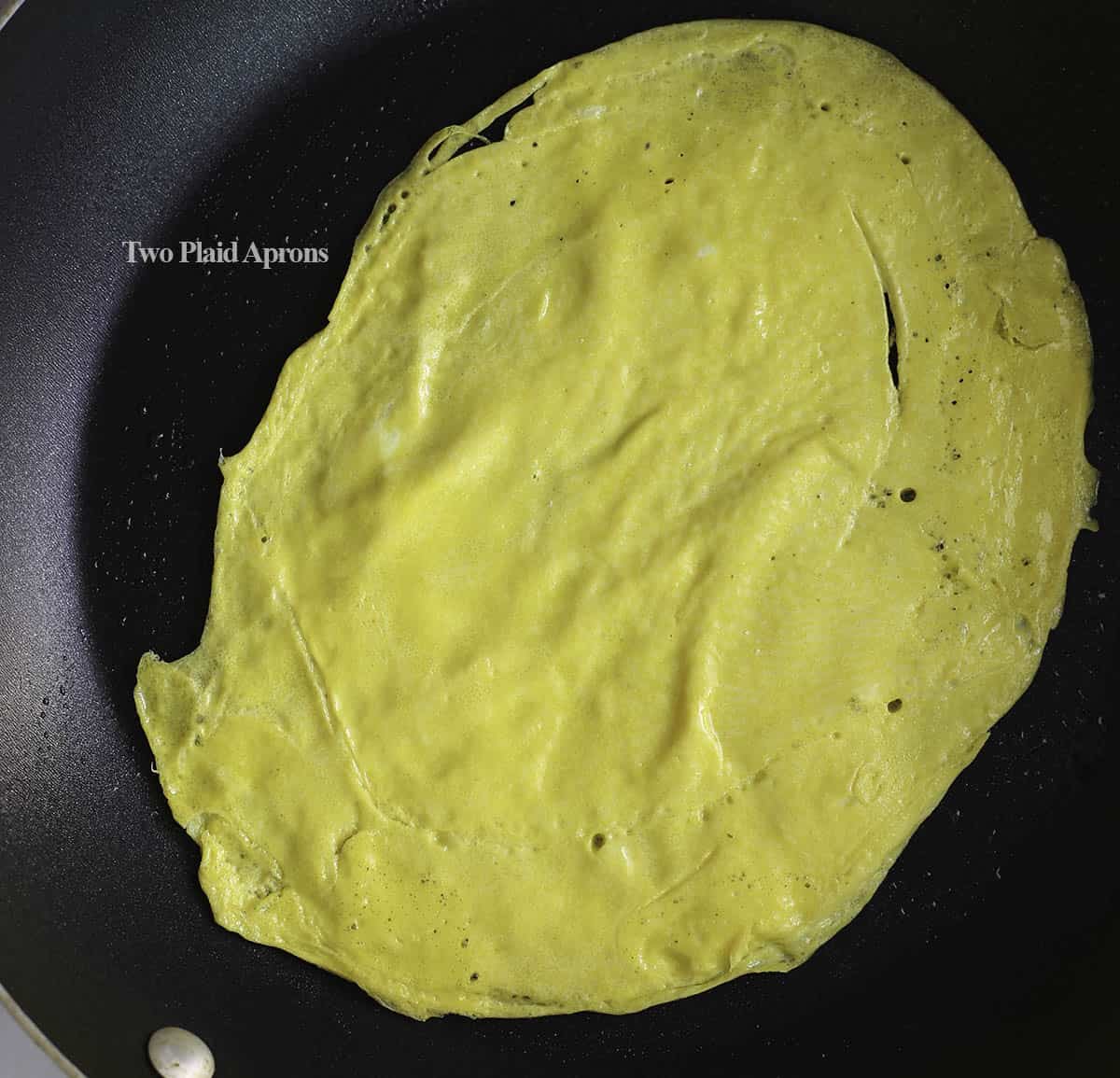
3. Skim the soup for scum to keep the flavor clean. When simmering the beef, sometimes scum from the meat floats to the top of the soup. Skim it off with a spoon to keep the soup clean and prevents the soup from looking murky.
4. Stir the soup frequently after adding the rice cakes to prevent the rice cakes from sticking to the bottom of the pot.
5. Slowly drizzle the egg whites into the rice cake soup in a circular motion to create "egg drops". If you want thin, wispy egg drops, gently stir the soup as you add the egg whites. For thicker, chunkier egg drops, wait a few seconds after adding the egg whites before stirring.
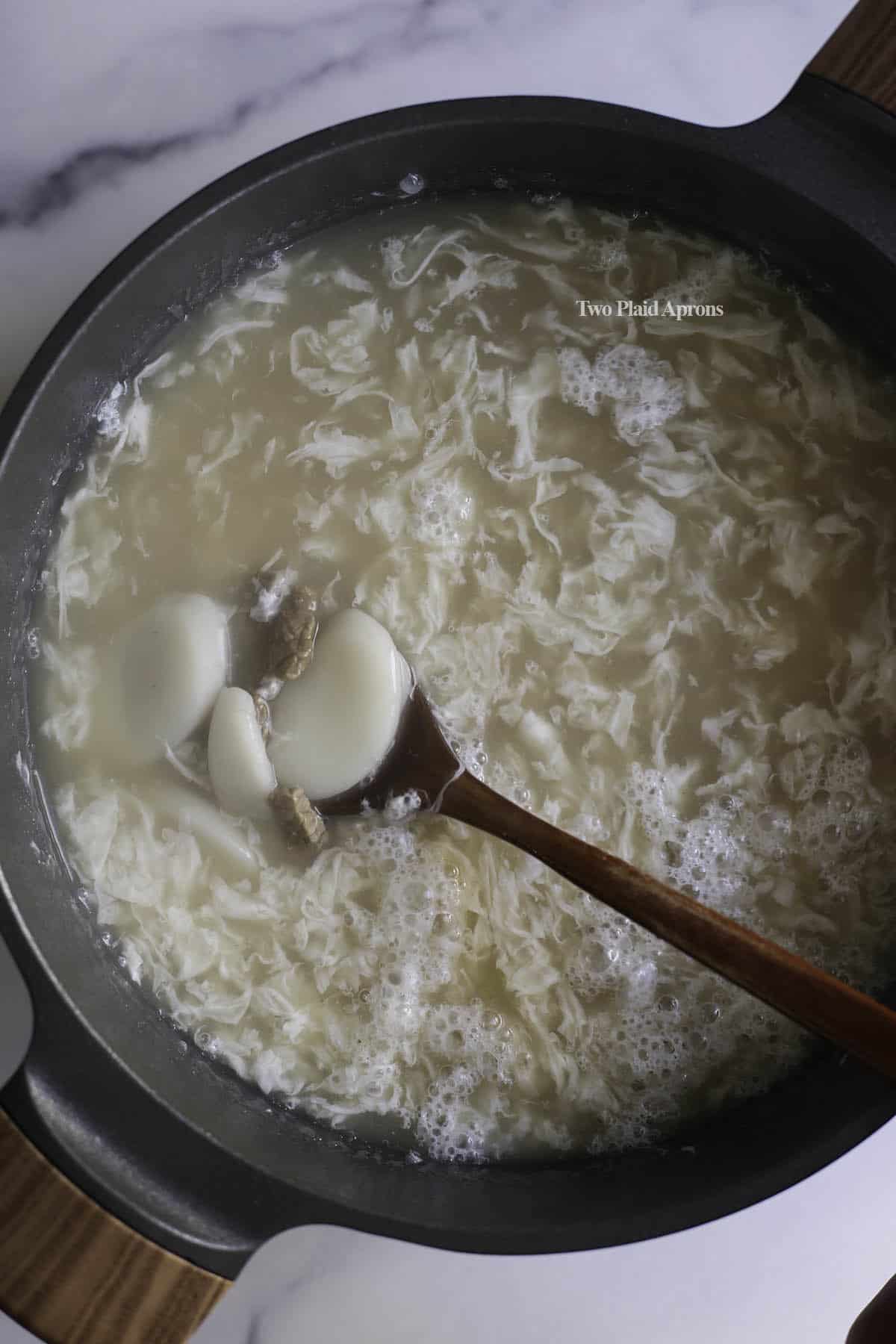
FAQs
Technically, you don't need to soak the rice cakes. However, soaking rice cakes help soften and separate them and reduce the cooking time. I highly recommend soaking your rice cakes, especially, if they are frozen. It's also a great way to defrost them.
To soften dduk (or rice cakes), soak them in room temperature water for 30 minutes to an hour, or overnight if needed.
Depending on the brand, cooking time for sliced dduk (rice cakes) will differ. Most packages instruct the rice cakes to be boiled for 2-3 minutes, but usually that is not enough time. They may be soft when pipping hot, but once they cool a little, they'll become quite chewy. Instead, cook the dduk for 6-10 minutes, or until you can easily cut one with a fork or spoon. They should be tender with a slight chew.
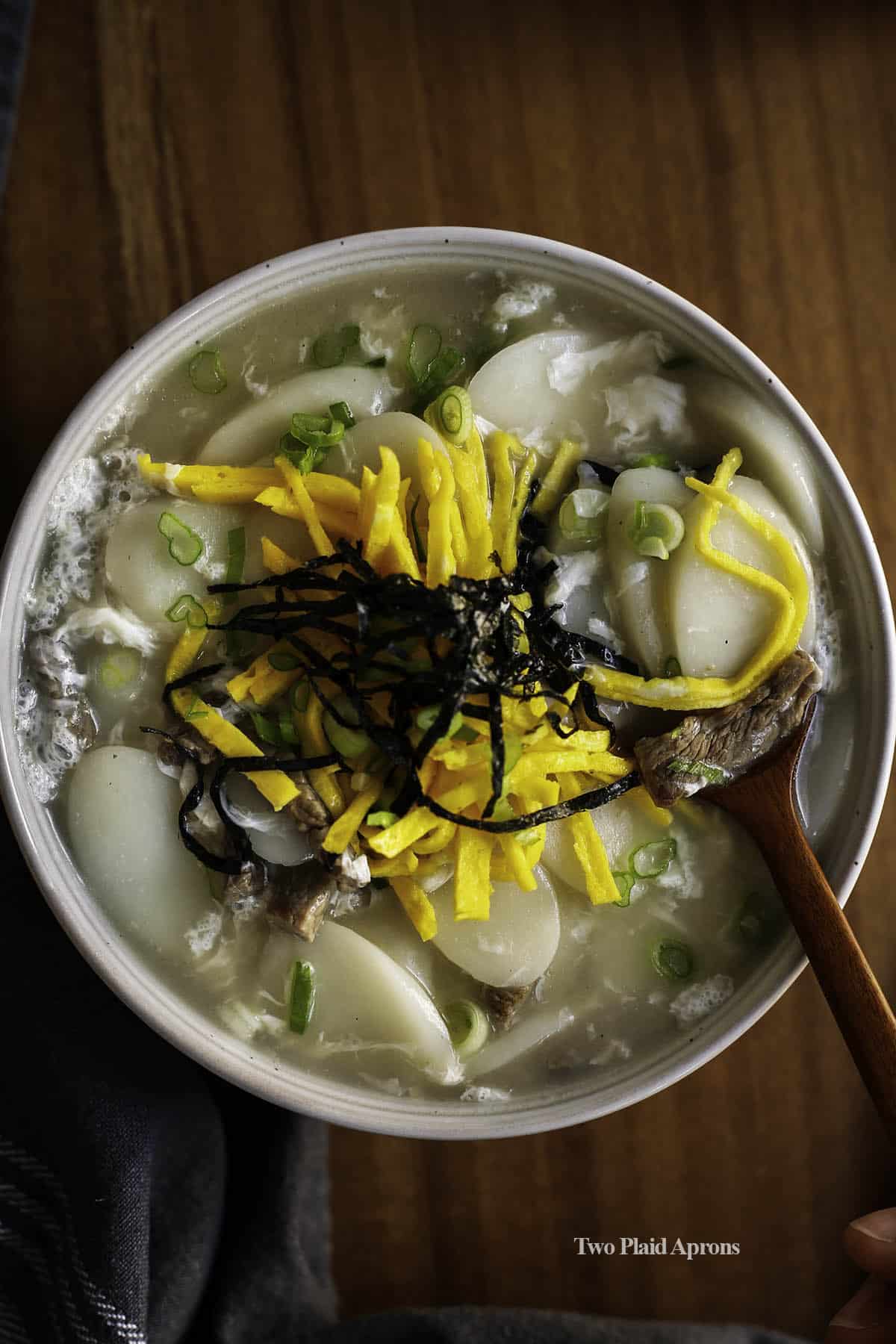
If you’ve made this recipe or any recipes from our blog, please tag us on Instagram using #twoplaidaprons! You can also tag us in your Instagram stories using @two_plaid_aprons. We would love to see your creations! It absolutely makes our day! 🥰
📖 Recipe
One Pot Tteok Mandu Guk with Beef
Ingredients
For the tteok mandu guk (rice cake dumpling soup):
- 12 ounces sliced rice cake
- 5.3 ounces beef top round , cut into 1 inch thin strips
- 2 Tablespoons soup soy sauce , or regular soy sauce
- 6 cups water
- 1 Tablespoon fish sauce
- 12 frozen Korean mandu , store-bought or homemade mandu (aka dumplings)
- 1 Tablespoon toasted sesame oil
- oil , as needed
- Kosher salt , season to taste
- Cracked black pepper , season to taste
For the garnish:
- 2 large egg , separated into yolks and whites
- 2 stalks green onion , thinly sliced
- 1 sheet toasted seaweed sheet , cut into thin strips (aka sushi nori or Korean dry seaweed - gim)
Instructions
- Soak the sliced rice cake:Place the sliced rice cake in a bowl and fill it with enough water to cover the rice cakes. Set aside and let it soak for 20 to 30 minutes.
- For the egg garnish (jidan):While the rice cakes are soaking, place a nonstick pan over medium-low heat and add a small amount of oil. Give the egg yolks a whisk and pour it into the pan. Tilt the pan around to spread the egg yolks into a thin layer. Let the egg crepe cook for a minute, or until the bottom is set. Flip the egg and cook for about 30 seconds, or until completely cooked.
- Remove the egg crepe from heat and let it cool. Cut the egg crepe in half, stack the halves, and cut into thin strips. Set aside for garnish.
- For the tteok mandu guk:In a medium pot over medium high heat, add about 1 tablespoon of oil. When the oil is hot, add the beef, a pinch of salt, and a few cracks of black pepper. Stir fry for a minute, then add the soup soy sauce and continue to cook for another 30 seconds.
- Add the water and bring the soup to boil. Reduce the heat to medium and let the soup simmer for about 5 minutes. Skim the soup as necessary.
- After 5 minutes, season the soup with a tablespoon of fish sauce. Then, drain and add the sliced rice cakes. Let the rice cake simmer for a minute or two, making sure to stir the pot frequently to prevent the rice cakes from sticking to the bottom of the pot.
- Add the frozen mandu (dumplings) to the soup and continue simmering for another 6 to 8 minutes, or until the rice cakes are tender and the mandu are cooked. The soup will have thickened at this point.
- Whisk the egg whites for a few seconds and drizzle it into the soup in a circular motion. Wait for a second and give the soup a stir.
- Turn off the heat and taste the soup. Adjust the soup to your preference with more salt and pepper if needed.
- Garnish and serve the soup:Portion the soup into bowls and garnish each bowl with the egg crepe strips, sliced green onions, and roasted seaweed strips. Enjoy!
Notes
- Feel free to use any cuts of beef you have. Most common substitutes are brisket, stew meat, tenderloin, and sirloins.
- If you don't have soup soy sauce, you can substitute it for regular soy sauce.
- You can use any store-bought Korean dumplings (mandu) or use homemade mandu. If using fresh mandu (not frozen), add them to the soup 2 to 3 minutes later than instructed for the frozen ones.
- If you prefer a tteok mandu guk that is not as thick, you can boil or steam the mandu separately, then add them to the soup. (This soup has the consistency of egg drop soup.)

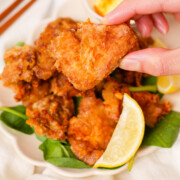
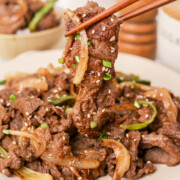
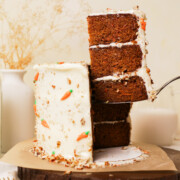
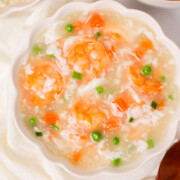
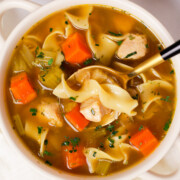
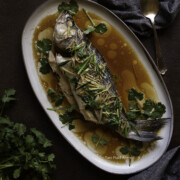


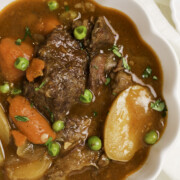
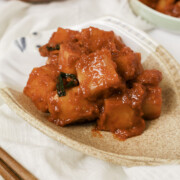
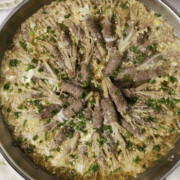
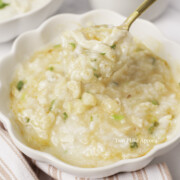
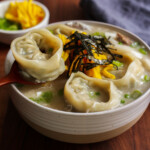




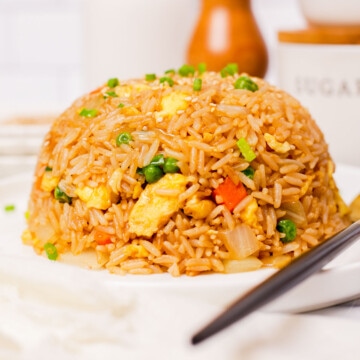
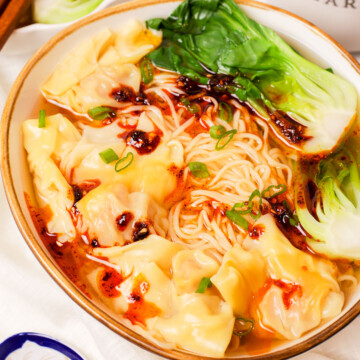
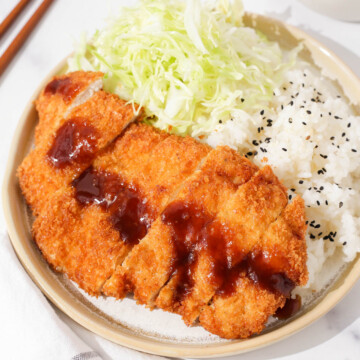

Comments
No Comments